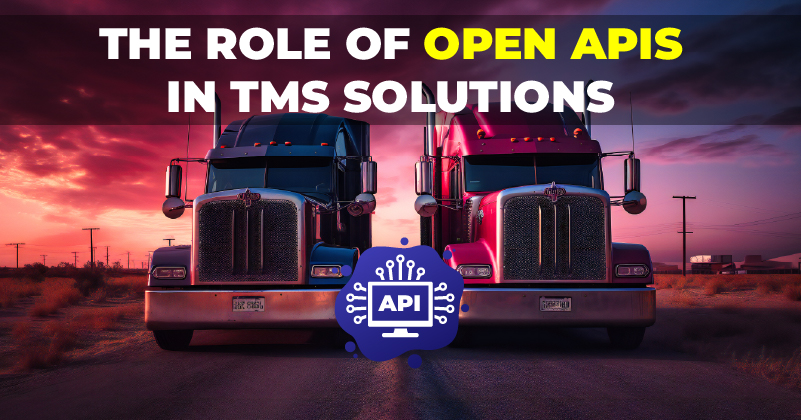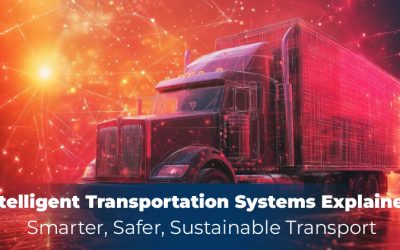
SEO Meta-Description: Discover how open APIs and seamless integration can revolutionize your TMS solutions, providing comprehensive visibility across GIS, fleet management, asset management, and more.
In today’s fast-paced and technologically advanced world, businesses are constantly looking for ways to improve their operations and enhance efficiency. For Transportation Management System (TMS) providers, the need for comprehensive visibility and streamlined operations is more critical than ever. This is where open APIs (Application Programming Interfaces) come into play. By enabling seamless integration with various systems like GIS (Geographic Information Systems), fleet management, and asset management, open APIs are revolutionizing the TMS industry. This blog will delve into the significance of open APIs and how they facilitate seamless integration, offering complete visibility across your operations.
What is Open API
Open APIs are publicly available application programming interfaces that allow developers to access certain functionalities and data of a software application. They enable different software systems to communicate and interact with each other, fostering interoperability and enhancing functionality.
Key Benefits of Open APIs:
Interoperability: Ensures different systems can work together seamlessly.
Flexibility: Allows customization to meet specific business needs.
Efficiency: Reduces the time and effort required for integration.
Innovation: Encourages the development of new features and services.
The Role of Open APIs in TMS Solutions
Enhanced Connectivity
Open APIs allow TMS solutions to connect with various external systems, ensuring that all aspects of transportation management are integrated. This connectivity is crucial for real-time data sharing and decision-making.
Comprehensive Visibility
By integrating with GIS, fleet management, and asset management systems, TMS solutions can offer a holistic view of operations. This visibility helps in monitoring and optimizing various elements of the supply chain, from route planning to asset utilization.
Streamlined Operations
Seamless integration facilitated by open APIs leads to streamlined operations. It eliminates data silos, reduces manual data entry, and ensures that all systems work in harmony, resulting in improved efficiency and productivity.
Integrating TMS with GIS
Geographic Information Systems (GIS)
GIS technology is vital for transportation management. It helps in route planning, tracking, and optimizing logistics. By integrating GIS with TMS through open APIs, businesses can gain insights into geographical data, enhance route efficiency, and reduce operational costs.
Key Benefits:
Real-time Tracking: Monitor vehicle locations in real-time.
Route Optimization: Plan and adjust routes for efficiency.
Geospatial Analysis: Analyze geographical data for better decision-making.
Integrating TMS with Fleet Management Systems
Fleet Management Systems
Fleet management involves the coordination and management of a company’s transportation fleet. Integrating TMS with fleet management systems via open APIs provides comprehensive data on vehicle performance, maintenance schedules, and driver behavior.
Key Benefits:
Maintenance Management: Schedule and track vehicle maintenance.
Performance Monitoring: Monitor vehicle performance and fuel consumption.
Driver Management: Track and manage driver behavior and compliance.
Integrating TMS with Asset Management Systems
Asset Management Systems
Asset management systems help in tracking and managing physical assets. Integrating TMS with asset management systems ensures that all assets, such as trucks, trailers, and equipment, are efficiently utilized and maintained.
Key Benefits:
Asset Tracking: Keep track of all assets in real-time.
Utilization Optimization: Ensure optimal use of assets.
Maintenance Scheduling: Plan and track maintenance activities.
Best Practices for Implementing Open APIs in TMS
Choose the Right APIs
Selecting the right APIs that align with your business needs is crucial. Ensure they are well-documented, secure, and supported by the provider.
Ensure Data Security
When integrating different systems, data security should be a top priority. Implement robust security measures to protect sensitive information.
Collaborate with Partners
Work closely with your technology partners to ensure smooth integration. Effective communication and collaboration are key to successful implementation.
Test Extensively
Thorough testing is essential to identify and resolve any issues before full-scale implementation. This ensures a smooth transition and minimizes disruptions.
Future of Open APIs in TMS
As technology continues to evolve, the role of open APIs in TMS will become even more significant. The future holds the promise of more advanced integrations, greater automation, and enhanced data analytics capabilities. Businesses that leverage open APIs will be better positioned to adapt to changing market demands and maintain a competitive edge.
Conclusion
At TMS-Digital, we understand the importance of open APIs in revolutionizing transportation management. By facilitating seamless integration with GIS, fleet management, and asset management systems, open APIs enhance visibility and streamline operations. As a leading TMS solutions provider in the US, we are committed to leveraging the power of open APIs to deliver innovative, efficient, and comprehensive solutions to our clients.
Ready to transform your transportation management with seamless integration? Contact TMS-Digital today and discover how we can help you achieve complete operational visibility.
FAQs
What are open APIs?
Open APIs are publicly available interfaces that allow developers to access and interact with the functionalities of a software application. They enable different systems to communicate and integrate seamlessly.
How do open APIs benefit TMS solution?
Open APIs enhance TMS solutions by enabling seamless integration with various systems, providing comprehensive visibility, and streamlining operations. They improve connectivity, data sharing, and decision-making.
What systems can be integrated with TMS using open APIs?
TMS solutions can be integrated with GIS, fleet management, asset management, and other relevant systems. This integration provides a holistic view of operations and enhances efficiency.
What are the key benefits of integrating GIS with TMS?
Integrating GIS with TMS enhances route planning, real-time tracking, and geospatial analysis. It improves route efficiency, reduces operational costs, and provides valuable geographical insights.
How does integrating fleet management systems with TMS improve operations?
Integration with fleet management systems provides data on vehicle performance, maintenance schedules, and driver behavior. This leads to better maintenance practices, extended vehicle lifespans, and improved fleet utilization.
Why is data security important when using open APIs? Data security is crucial when integrating different systems to protect sensitive information. Implementing robust security measures ensures that data is safe from breaches and unauthorized access.









